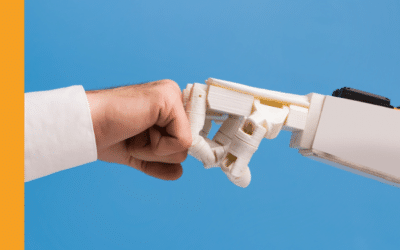Businesses operating in the modern world have a multitude of technologies at their disposal to improve bottom-line performance. From cloud computing and automation software to digital marketing and social networking, technology can increase collaboration, boost efficiency, strengthen reputations, and enhance communication.
But in spite of these essential systems and advantageous resources, the capabilities of people power is beyond compare. Even though humans are prone to errors and have bad days from time to time, an organisation’s workforce has the potential to make or break prolonged prosperity and profitability.
Therefore, taking a proactive and positive approach towards people management can have far reaching rewards, especially when performance is concerned. But how can you improve the performance of your employees, and by association, your business? Well, it is all about striking the right balance between traditional means of motivation and utilising 21st century technology.
Empower your employees
“Empowerment is the key to making people efficient,” says Todd Ross Nienkerk, co-founder and partner of Four Kitchens. “It makes teams happy, and if they’re happy, they produce higher-quality work and are more productive.”
Nienkerk also believes that if you put members of staff in control of their own destinies by establishing individual strategies and goals, they won’t come to you with questions and will soon develop a long-term vision of empowerment.
However, this doesn’t mean to say you should leave employees to their own devices with littler to no support. As Charlie Nooney, CEO of MobiTV explains:
“”[Ensure] that your employees have access to the resources they need to succeed. I empower my employees to create and plan for how they can best be successful, as this brings out their vision, and then hold them accountable on this vision by establishing clear deliverables and deadlines. Better results come when a team feels valued and [is] equipped with the proper resources needed to perform the job successfully.”
Give employees greater freedom and invest in their well-being
“We’ve been successful in improving our employees’ performance by providing amazing employee perks,” claims Corey Baggett, co-founder of AdBoom Group. “From unlimited PTO (Paid Time Off) and profit-sharing plans to monthly team outings like 5K runs and charity events, our employees appreciate the ownership that we have given them.”
By giving members of staff more freedom, they will feel more responsible when carrying out their daily duties, which can lead to greater productivity and efficiency. This tactic can also encourage creativity and innovation, as employees won’t be burdened by a rigid working framework.
Jay Bacrania, CEO of Signet Education, shares this opinion. “When you invest in someone, it creates an environment where people want to work hard. Care about what’s going on in their lives. Show them it’s not just about the bottom line or getting the job done — it’s [about] what you’re doing together. If you genuinely care for someone and their well-being, they’ll allow themselves to be pushed harder because it’s not coming from a place of greed.”
Introduce and implement the right technologies
Capitalising on the cavalcade of today’s technology choices is all well and good. However, in order to improve the performance of your business and employees, you will need to introduce and implement the right technologies that help, not hinder your workforce.
Although millenials have grown up with things like smartphones and social media and are therefore more willing to embrace changes involving technology, older employees might not feel the same. But technologies like cloud computing can encourage collaboration and foster productivity with hardly any disruption to the daily routine.
“With a collaborative platform, managers can communicate with their teams with action items they can use to validate comprehension, allowing for a fully closed-loop communications solution to drive engagement and performance,” says Mal Poulin, senior director of product strategy at Ancile Solutions.
Encourage two-way communication
When it comes to addressing employee issues or solving performance problems, there is no point beating about the bush. By encouraging two-way communication and asking members of staff to openly express themselves, the whole business will benefit.
“We interview the employee and ask them what they like and dislike about their position, [and] ask them to be very forthright,” reveals Beau Hale, president and co-founder of AdBoom Group. Often, we’ll find that a particular position isn’t the right fit for that individual at all. And once we receive their feedback, most times, we realise that they need a new position altogether.”
William Dann, author of Creating High Performers: Seven Questions to Ask Your Direct Reports, feels the same. “You need to diagnose the source of [an employee’s] struggle,” he says. “Some possibilities are that they do not have enough clarity [regarding] expectations, standards, priorities, methods; they lack skills or confidence; they are not team players; or they lack motivation. Once you know the source of the struggle, you can take the appropriate leadership action which may be direction, coaching or career counselling.”
Upskill your staff using gamification
One of Dann’s suggested leadership actions for struggling employees is coaching. However, upskilling your staff is a great idea anyway, as long as your choose the right techniques to avoid a lack of employee interest and guarantee high levels of memory retention. Gamification not only helps staff acquire new knowledge in an interesting and engaging way, it can also do wonders for motivation and performance levels.
This is because it leverages game-design elements and principles to arouse interest, capitalises on the natural human instinct of competition, and provides employees with more meaningful rewards.
“People may be motivated by getting a gift card, but what really drives them is recognition [as well as] status, access, power, and stuff (the SAPS model),” says Gabe Zichermann, author of The Gamification Revolution.
“It’s about figuring out ways to create alignment with incentives and motivation. You increase productivity [and] performance and you can attract a higher-quality employee, this next generation of employees or millennials generation who bring with them their increased technology skills.”





